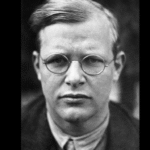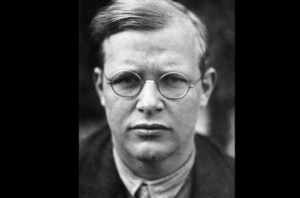
Lawrence greets Merry Christmas to prisoners
The movie
‘Merry Christmas, Mr. Lawrence’ is a film that emerged from the creative vision of Japanese director Nagisa Oshima, released in 1983. This cinematic work is unique not only because of its compelling narrative but also due to its complex themes and character dynamics, all set against the backdrop of World War II. The film is based on the novel ‘The Seed and the Sower’ by Laurens van der Post, intertwining elements of captivity, survival, and the profound intersections of human dignity in times of war.
Partner Boost
The film’s reception at its release was notable, garnering attention for its intricate narrative and the performances of its cast. Critiques often highlight the film’s ability to provoke thought regarding the complexities of loyalty, morality, and the human experience amid the brutalities of war, positioning it as a significant contribution to world cinema.
Plot Summary and Key Themes
‘Merry Christmas, Mr. Lawrence’ is a poignant film that unfolds within a Japanese prisoner-of-war camp during World War II, intricately exploring the dynamics between the British soldiers and their Japanese captors. Central to the narrative is the character of John Lawrence, portrayed by Tom Conti, a compassionate British POW who maintains a sense of dignity throughout his captivity.
Another key figure is Colonel Saito, played by Takeshi Kitano, the camp commander, whose rigid adherence to military protocol comes into conflict with his emerging respect for Lawrence.
The plot intricately weaves together the lives of several characters, including Captain Yonoi, whose fascination with Lawrence leads to conflicting emotions and a struggle to comprehend the complexities of human connection amidst the horrors of war.
The tension escalates as the film delves into significant plot points, such as Lawrence’s attempts to broker a form of respect and understanding between the captives and their captors. These interactions highlight the nuances of power dynamics, cultural differences, and the emotional weight of captivity.
As the story unfolds, themes of cultural conflict become increasingly prominent. The film not only contrasts Western and Eastern values but also exposes the shared humanity between enemies. Forgiveness emerges as a recurring motif, as characters grapple with their personal demons and the broader implications of their actions.
The complexity of human relationships during wartime is illustrated through moments of compassion, betrayal, and the longing for connection, making the narrative resonate on an intimate level.
Protagonists and Antagonists
At the forefront is Captain Yonoi, a Japanese officer whose strict adherence to the codes of honor encapsulates the clash of cultures and individuality against the backdrop of military hierarchy. His initial portrayal as a stern and uncompromising figure gradually gives way to a deeper exploration of his vulnerabilities and the burdens of his command.
His fascination with Major Jack Celliers, a British POW, thereby illustrates not only a personal intrigue but also the broader themes of respect and human connection amidst conflict.
Major Jack Celliers emerges as a complex character who embodies the spirit of resilience and defiance. His motivations are deeply rooted in a sense of honor and integrity, which challenges the oppressive structures of captivity attempted by the Japanese officers.
As Celliers navigates his imprisonment, his character arc evolves, showcasing his struggle not just for survival, but for the preservation of his humanity. This pursuit draws him into a psychological duel with Yonoi, ultimately leading to moments of mutual understanding that transcend the animosities inherent in their roles as adversaries.
Sergeant Hara stands out as another key figure, providing an alternative perspective on loyalty and morality within the ranks of the captors. Initially portrayed as a harsh enforcer, Hara’s character unveils the internal conflicts and pressures he faces.
Through his interactions with both Yonoi and Celliers, the film reveals Hara’s desire for personal redemption and his quest for a sense of belonging. The interplay of power and vulnerability in Hara’s character invites viewers to reconsider the binaries of protagonist and antagonist, highlighting the fluidity of allegiance during wartime.
The character developments in ‘Merry Christmas, Mr. Lawrence’ encapsulate the intricacies of human relationships under the duress of war, painting a vivid picture of the moral dilemmas faced by individuals entangled in circumstances far beyond their control.
Cinematographic Techniques
Director Nagisa Oshima employs a variety of innovative techniques that distinguish ‘Merry Christmas, Mr. Lawrence’ as a significant work of cinema.
The use of long takes demands a slower rhythm that allows viewers to absorb the nuanced performances of the actors. Furthermore, his ability to blend cultural contexts fosters a dialogue between the characters that is both intimate and universal.
Partner Boost
Oshima’s directorial prowess not only shapes the film’s aesthetic but also invites deep contemplation on the complexities of human relationships under duress.
Share this content:
mefpnkuhud
yuhwqttfrdgyqqsqqsfmyitgningdq
yOStTxKHQaJIhKWXf
MuKFyKmoSKEpRUYn
























2 comments